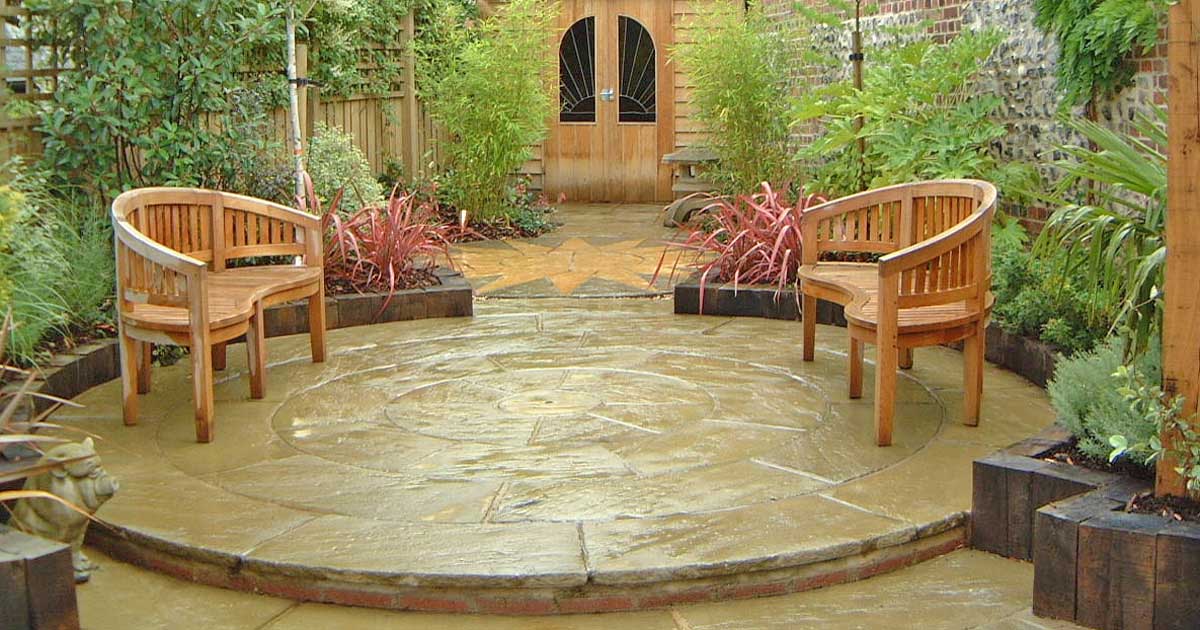Share
7 July 2021
How To Lay a Circular Patio
The patio circle has been a popular design feature throughout the ages and perhaps it is the perfect symmetry of circles that makes them so attractive for UK homeowners in their gardens. Patio circles are a great way to create an unique entertaining space and they are ideal for alfresco dining. Our How To Lay a Circular Patio guide features all the materials and tools required as well as five basic steps to follow when building a circular patio.
Tools & Materials
Laying a patio circle is a great project to undertake and requires no more than standard items available from local DIY stores.
- Paving Stones
- Sand
- Cement
- Crush and Run sub base
- Spirit Level
- Tape Measure
- Spade
- Rubber Paving Mallet
- Pointing Trowel
- Compactor
Step 1 - Positioning
Position a comfortable chair in a likely spot within the garden and see how it feels at different times during the day. Consider the seasonal changes in the garden and of course the light and shade positions. Once chosen mark out the circle with spray paint or a garden hose and see how it relates to the rest of the garden.
Step 2 - Preparation
Once you have chosen the right patio circle paving stones for your garden, the next thing you need to do is dry lay the circular segments, starting from the centre piece. Allow 10-20mm of space for pointing up afterwards and lay the whole circle out on the lawn or intended area.
Step 3 - Foundation
Patio circles should always be laid on a solid base of crush and run. Carefully using a spade, remove the turf and dig down 150mm. Fill with 100mm of compacted hardcore and set the circular segments on a bed of mortar 25mm to 40mm thick. Use 5 parts sharp sand to 1 part cement, and ensure the mix is damp but not too wet.
Step 4 - Laying The Circle
Start with the centre piece and tamp down onto the bed of mortar with a rubber mallet. Check that you have a fall of 1:80 (25mm over 2m), to allow rain water drainage. Keep checking your levels with a spirit level as you move outwards from the centre paving stone.
Step 5 - Pointing
Prepare a mix of 3 parts of building sand (soft sand ) to 1 part cement, again this needs to be damp but not sloppy. Use a trowel and a piece of pipe to fill the gaps between the paving stones to give a professional finish to the project. Always remove excess to avoid staining.

